Unblocked Games Classroom 6x | Classroom 6x Unblocked Games | Google Classroom Games 6x
Unblocked games have gained popularity in classrooms as a way to provide students with engaging and educational content during their breaks. With the advent of technology, online games have become more accessible, and educators are recognizing their potential as learning tools. One such game that has caught the attention of both teachers and students is "Unblocked Games Classroom 6x." In this article, we will explore the features, benefits, and educational value of this game.
Multiplication Games | Addition Games| Subtraction Games | Telling Time Games | Fraction Games |
Kindergarten Math Games
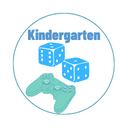
Play free preschool and kindergarten math games for kids. Fun math activities for kindergarten
Go to page1st Grade Math Games

Math games for 1st grade students to play games and practice different math topics. Maths games for class 1
Go to page2nd Grade Math Games
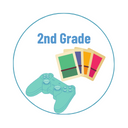
2nd grade math games for kids to play and practice math problems. Maths games for 2nd class
Go to page3rd Grade Math Games
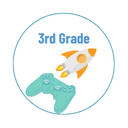
3rd grade math games for kids to play and practice math problems. Maths games for class 3
Go to page4th Grade Math Games

4th grade math games for kids to play and practice math problems. Fun math activities for 4th graders
Go to page5th Grade Math Games
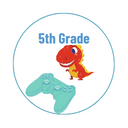
5th grade math games for kids to play and practice math problems. Cool math games for 5th graders
Go to page6th Grade Math Games

6th grade math games for kids to play and practice math problems. Math jeopardy 6th grade.
Go to page7th Grade Math Games
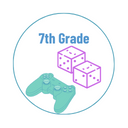
7th grade math games for kids to play and practice math problems. Math games for grade 7
Go to page
In today's digital age, traditional teaching methods are being supplemented with technology-driven tools to enhance the learning experience. Unblocked Games Classroom 6x is one such tool that combines entertainment and education, allowing students to have fun while developing valuable skills.
What is Unblocked Games Classroom 6x?
Unblocked Games Classroom 6x is an online gaming platform specifically designed for educational purposes. It offers a wide range of games across various subjects, including math, science, language arts, and geography. The platform ensures that the games are unblocked and accessible to students, even within school networks.
The Benefits of Unblocked Games in Education
- Engaging and Motivating: Games are inherently captivating and can help increase students' motivation to learn.
- Interactive Learning: Unblocked games provide an interactive learning experience, allowing students to actively participate in the educational process.
- Skill Development: Games often require problem-solving, critical thinking, and decision-making skills, fostering cognitive development.
- Differentiated Instruction: Unblocked games offer various difficulty levels, allowing teachers to tailor the gameplay to individual students' needs.
- Collaboration and Competition: Multiplayer games encourage collaboration and healthy competition among students, promoting teamwork and social skills.
How Does Unblocked Games Classroom 6x Work?
Unblocked Games Classroom 6x operates on a web-based platform accessible through internet browsers. Teachers can create accounts for their students and customize game options based on their educational objectives. The platform also provides progress tracking features, allowing teachers to monitor individual student performance.
Educational Value of Unblocked Games Classroom 6x
Unblocked Games Classroom 6x goes beyond traditional teaching methods by integrating educational content seamlessly into gameplay. The games are designed to align with curriculum standards and cover various educational topics. By playing these games, students reinforce their knowledge while having an enjoyable experience.

Incorporating Unblocked Games Classroom 6x in the Classroom
To effectively incorporate Unblocked Games Classroom 6x into the classroom, teachers should:
Strategies for Effective Implementation
- Introduce the game gradually, ensuring students understand its purpose and relevance.
- Encourage collaboration by assigning group projects or multiplayer games.
- Use games as formative assessments to gauge students' understanding of specific concepts.
- Offer rewards or incentives to motivate students and foster healthy competition.
- Provide a balance between game-based learning and other instructional methods.
Overcoming Challenges
Implementing Unblocked Games Classroom 6x may come with challenges such as:
Success Stories
Educators who have incorporated Unblocked Games Classroom 6x have reported positive outcomes:
The Future of Unblocked Games in Education
Unblocked games have the potential to revolutionize education by providing interactive and engaging learning experiences. As technology continues to advance, the integration of gamification in classrooms is likely to increase, offering more opportunities for student-centered learning.
Google Classroom Games: Engaging Students for Fun and Learning
Google Classroom has revolutionized the way educators and students interact in a virtual learning environment. Its seamless integration with various educational tools and applications has made teaching and learning more engaging and interactive. One aspect that adds an element of fun and excitement to the Google Classroom experience is the availability of educational games. In this article, we will explore the benefits of Google Classroom games, highlight some popular options, discuss the implementation process, provide tips for successful integration, and address common concerns.
Benefits of Google Classroom Games
Enhances Student Engagement
Engaging students is crucial for effective learning. Google Classroom games offer a refreshing break from traditional teaching methods and capture students' attention through interactive and stimulating activities. By introducing game elements, such as leaderboards, badges, and rewards, teachers can motivate students to actively participate and stay focused on the learning objectives.
Promotes Active Learning
Active learning involves students directly engaging with the material, which leads to better comprehension and retention. Google Classroom games encourage students to actively participate in problem-solving, critical thinking, and decision-making. Through interactive challenges and puzzles, students apply their knowledge in a practical and engaging manner, leading to a deeper understanding of the subject matter.
Encourages Collaboration
Collaboration is a vital skill in today's interconnected world. Google Classroom games provide opportunities for students to work together, fostering teamwork, communication, and cooperation. Whether it's solving a mystery together or competing in teams, students learn to collaborate effectively, share ideas, and support each other's learning.
Top 5 Google Classroom Games
Quizlet Live
Quizlet Live is an interactive game that transforms studying into a collaborative classroom activity. It allows teachers to create flashcards and quizzes on various topics. Students are divided into teams and compete against each other, answering questions to earn points. The game promotes healthy competition while reinforcing knowledge and vocabulary retention.
Flippity
Flippity is a versatile tool that offers a range of customizable games and activities. Teachers can create flashcards, Jeopardy-style quizzes, and even random name pickers. By incorporating multimedia elements, such as images and videos, Flippity makes learning more engaging and interactive.
Mystery Hangouts
Mystery Hangouts is an intriguing game that promotes critical thinking and geographical knowledge. Students engage in a video call with another classroom from a different location. Through a series of yes-or-no questions, they have to deduce the other classroom's location. This game not only enhances collaboration but also develops problem-solving and deductive reasoning skills.
Breakout EDU Digital
Breakout EDU Digital brings the popular escape room concept to the virtual classroom. Students work together to solve puzzles, find clues, and unlock digital locks to "escape" within a given time limit. This immersive and challenging game encourages critical thinking, teamwork, and perseverance.
Gimkit
Gimkit is an interactive quiz game that keeps students engaged and motivated. Teachers can create quizzes with multiple-choice questions and customize the game with various power-ups, such as earning extra points or slowing down the timer. With its competitive nature and real-time feedback, Gimkit sparks enthusiasm and encourages healthy competition among students.
How to Integrate Google Classroom Games
Integrating Google Classroom games into your teaching strategy is a straightforward process. Here are the steps to get started:
Step 1: Accessing Google Classroom
Log in to your Google Classroom account and navigate to the desired class. Ensure that all students have joined the class and have access to their Google accounts.
Step 2: Choosing the Right Game
Explore the available Google Classroom games and select one that aligns with your learning objectives and the students' needs. Consider factors such as subject relevance, grade level, and the game's features and engagement level.
Step 3: Assigning the Game to Students
Create an assignment in Google Classroom and provide clear instructions on how to access and play the game. Include any necessary links or codes for students to join the game. Set a deadline for completion if desired.
Step 4: Monitoring Student Progress
Monitor students' progress within the game through real-time data and analytics provided by the game platform. This allows you to track individual performance, identify areas of improvement, and provide targeted feedback.
Tips for Successful Implementation
To ensure a successful implementation of Google Classroom games, consider the following tips:
Establish Clear Objectives
Define clear learning objectives for each game to ensure alignment with the curriculum. Communicate these objectives to the students so they understand the purpose of the game and what they are expected to achieve.
Provide Adequate Instructions
Offer detailed instructions on how to access and play the game. Include any necessary technical requirements, such as device compatibility or internet connectivity. Walk students through the game's rules and mechanics, ensuring they have a clear understanding of how to engage with the game.
Encourage Collaboration
Promote collaboration and teamwork during gameplay. Design activities that require students to work together, share ideas, and support each other's learning. Encourage open discussions and foster a supportive and inclusive learning environment.
Offer Rewards and Incentives
Implement a reward system to motivate students and acknowledge their achievements. This can include virtual badges, certificates, or points. Celebrate milestones and recognize students' efforts to create a positive and engaging learning experience.
Overcoming Challenges
Integrating Google Classroom games may come with some challenges. Here are a few common ones and strategies to address them:
Technical Issues
Technical difficulties, such as connectivity problems or compatibility issues, can hinder the smooth execution of Google Classroom games. Ensure that all students have access to the necessary devices and a stable internet connection. Test the games in advance to identify and address any technical issues.
Student Resistance
Some students may initially resist the idea of incorporating games into their learningexperience. To overcome this resistance, emphasize the educational benefits of the games and how they can enhance their learning. Show enthusiasm and excitement about the games to generate interest and curiosity among students.
Limited Access to Devices
Not all students may have access to devices or reliable internet connections outside of the classroom. In such cases, consider alternative options, such as organizing game sessions during school hours or providing access to devices within the school premises. Additionally, explore offline game options or collaborative activities that can be conducted without digital devices.
Conclusion
Google Classroom games offer a dynamic and interactive way to engage students in the learning process. By incorporating games into the virtual classroom, educators can enhance student engagement, promote active learning, and encourage collaboration. Through popular games like Quizlet Live, Flippity, Mystery Hangouts, Breakout EDU Digital, and Gimkit, teachers can create immersive and educational experiences for their students. By following the implementation steps and considering tips for success, teachers can overcome challenges and create a stimulating and enjoyable learning environment.
FAQs
Can I create my own Google Classroom game?
Yes, you can create your own Google Classroom game using various educational game platforms and tools. These platforms often provide templates and resources to help you design and customize games according to your specific learning objectives.
Are Google Classroom games suitable for all subjects?
Google Classroom games can be adapted to various subjects and grade levels. While some games are subject-specific, others focus on developing general skills such as critical thinking, problem-solving, and collaboration. Explore different game options to find those that align with your subject area and learning goals.
How can I assess student performance in Google Classroom games?
Google Classroom games usually provide real-time data and analytics that allow you to monitor student progress and performance. You can track individual scores, identify areas of improvement, and provide targeted feedback based on the game data.
Assessing student performance in games integrated with Google Classroom, or any educational games used alongside Google Classroom, involves a blend of digital tools and traditional assessment methods to gauge learning outcomes, engagement, and skill development. Here are some strategies to consider:
-
Direct Integration Features: Some educational games can directly integrate with Google Classroom, allowing you to track progress, completion, scores, or achievements within the game. Check if the game has a reporting feature or an analytics dashboard that can export data to Google Classroom or a compatible format for review.
-
Quizzes and Surveys: Use Google Forms to create quizzes or surveys that reflect on the game's content. This can help assess what students have learned from the game, including understanding concepts, problem-solving skills, or remembering facts. You can embed these forms within the Classroom as assignments or in the classwork section.
-
Reflective Writing Assignments: Assign students to write about their experiences, strategies, and what they learned from the game. This can be a narrative or a reflective essay. Such assignments can provide insights into the students' thought processes, decision-making skills, and learning outcomes.
-
Discussion and Feedback: Organize classroom discussions or use the Google Classroom question feature to facilitate conversations about the game. This can include what students found challenging, interesting, or how they solved specific problems. Peer feedback and discussions can also be valuable in assessing soft skills like collaboration and communication.
-
Project-Based Assessments: For more comprehensive assessment, you can have students create projects based on the game's theme or content. This could be a research project, a presentation, or a creative writing assignment. Such projects can help assess deeper understanding and application of the game's educational content.
-
Performance Tasks: Design tasks that require students to apply skills or knowledge gained from the game in a real-world context. This could be solving a math problem, conducting a science experiment, or writing a historical essay based on scenarios encountered in the game.
-
Peer Assessment: Implement peer review sessions where students assess each other’s understanding or project work related to the game. This can encourage critical thinking and deepen understanding through teaching peers.
-
Digital Portfolios: Encourage students to maintain digital portfolios where they can collect evidence of their learning and achievements in the game, including screenshots, video recordings, or game scores, alongside reflective notes.
-
Learning Analytics: If the game provides learning analytics, use these insights to monitor student progress, time spent on tasks, and areas of difficulty. This data can be instrumental in providing targeted support and personalized learning paths.
Remember, the key to effectively assessing student performance in Google Classroom games is to clearly define the learning objectives and select assessment methods that best measure those outcomes. Combining digital and traditional assessment methods can offer a comprehensive view of student learning and engagement with the game's content.
Are there any age restrictions for using Google Classroom games?
Google Classroom games are designed for various age groups, and many games offer customizable features to adapt to different grade levels. It's important to select games that are age-appropriate and align with your students' developmental needs and abilities.
Google Classroom itself is an educational platform that allows teachers to create, distribute, and grade assignments in a paperless way. It's primarily designed to facilitate communication between educators and students and isn't specifically aimed at hosting games. However, educators can use Google Classroom to share links to educational games or activities that can be accessed through the web.
Regarding age restrictions for using Google Classroom or accessing games through it, Google Classroom is compliant with the Children's Online Privacy Protection Act (COPPA) and the Family Educational Rights and Privacy Act (FERPA) in the United States. This means it's designed to be safe for use by children under the age of 13 with parental consent, as part of its educational tool offerings for schools.
For games or any educational content shared via Google Classroom:
-
Content appropriateness: The responsibility often lies with educators to ensure that the games or links they share are appropriate for the age group they are teaching. This includes being mindful of the game's content, its educational value, and ensuring it complies with the school's policies on digital tool usage.
-
External game platforms: If a game is hosted on an external platform, that platform may have its own age restrictions or guidelines for use. It's important for educators to verify these restrictions to ensure they align with their students' ages and with school or district policies.
-
Parental consent: For students under the age of 13, parental consent is typically required for the use of educational technology tools, including Google Classroom and any third-party games or resources accessed through it.
In summary, while Google Classroom itself doesn't host games, it can be used to facilitate access to educational games and activities. Any age restrictions for these games would depend on the specific game or platform hosting the game, and educators are responsible for ensuring that any content shared through Google Classroom is appropriate and safe for their students.
Can Google Classroom games be played offline?
While most Google Classroom games require an internet connection, there are some offline game options available. These offline games can be downloaded or accessed through local networks, allowing students to engage in gameplay even without an internet connection.
Conclusion
Unblocked Games Classroom 6x offers a unique approach to education by combining gaming and learning. It engages students in a fun and interactive way while reinforcing key concepts and skills. By leveraging the benefits of unblocked games, educators can create a dynamic learning environment that fosters student success.
More FAQs1. Are the games on Unblocked Games Classroom 6x suitable for all grade levels? Yes, the platform offers games that cater to different grade levels, ensuring there is appropriate content for various students.
2. Can Unblocked Games Classroom 6x be accessed on mobile devices? Currently, Unblocked Games Classroom 6x is optimized for web browsers and may not be fully compatible with mobile devices. However, it is constantly evolving, and future updates may include mobile support.
3. Is Unblocked Games Classroom 6x free for teachers and students? Yes, the basic features of Unblocked Games Classroom 6x are available for free. However, certain premium features may require a subscription.
4. Can teachers track students' progress on Unblocked Games Classroom 6x? Absolutely! The platform provides progress tracking features, allowing teachers to monitor individual student performance and identify areas that require additional support.











